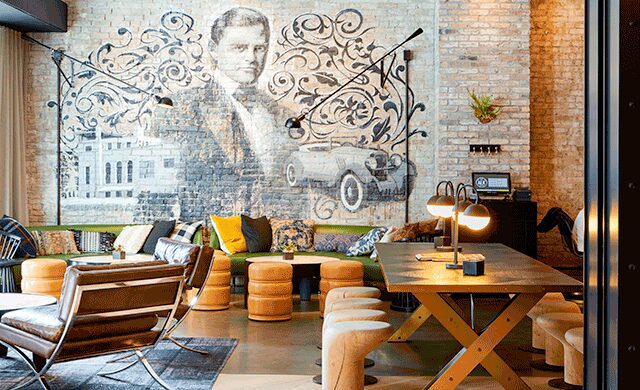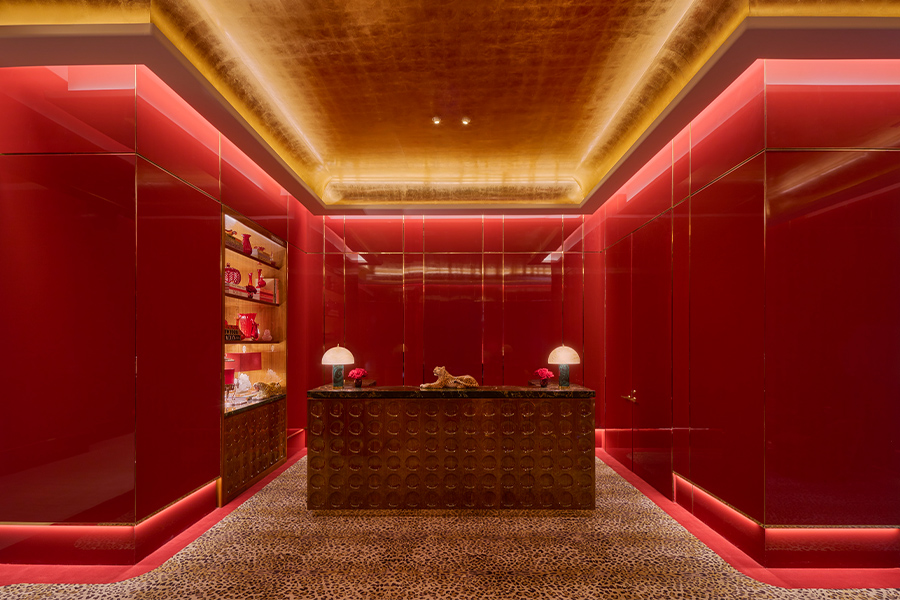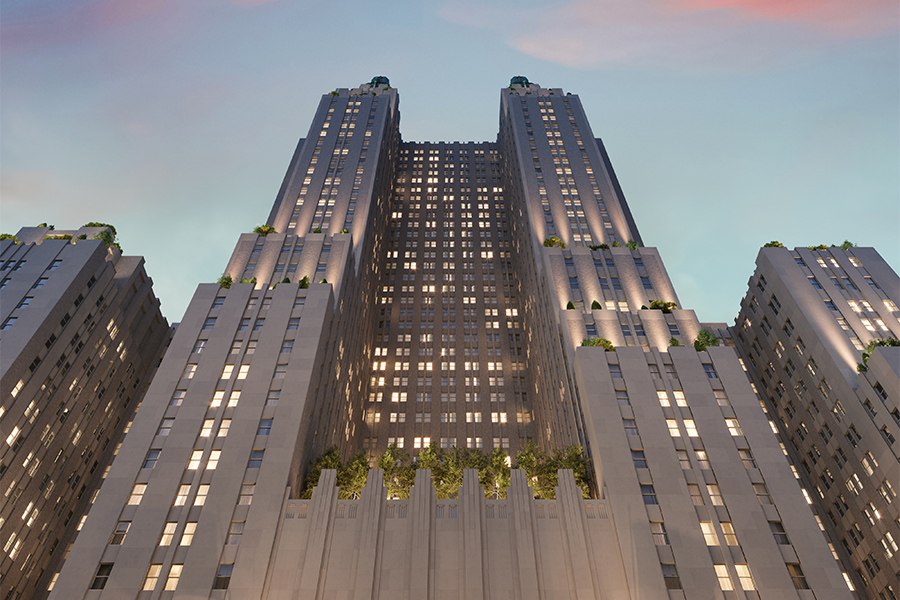
When Benjamin Marshall first designed the Atlantic Bank Building at 168 North Michigan Avenue in downtown Chicago in 1912, it quickly became a beacon in the city. Through the years, it underwent many iterations until it was finally brought back to life as the 218-room Hotel Julian last fall. HBA restored the building’s famous terracotta façade and added five new floors (part of Marshall’s original plans), while local firm the Gettys Group oversaw the guestroom and corridor design and New York-based Workshop/APD was tasked with updating the ground floor, including the steakhouse About Last Knife.
Like all of the firm’s projects, form and function steered the design scheme of the public spaces, which now stands as a welcoming extension of the city streets while still honoring Chicago’s past. “We took inspiration from the city itself and wanted Chicago’s character to be ever-present,” says Matt Berman, principal of Workshop/APD. “Together we were able to create a space that felt authentic to its use while maintaining a strong design language.”
Berman and his team started with the idea of the “cut” of meat “and the idea that it creates a different experience,” he says. This is translated into diagonal patterning, which is seen throughout, notably in the angular bookshelves, the front desk, wall pieces, and terrariums. “This helps to animate the spaces and blur the boundaries between them,” he says. In addition, the open and airy ground floor lobby is “meant to feel eclectic and funky,” so the team incorporated mismatched elements like bespoke sofas with midcentury furnishings, such as brass light fixtures and joinery.
In About Last Knife, Berman wanted guests to feel a sense of discovery “while paying respect to the impressive industrial history of Chicago.” The team kept the original brick walls intact but finished it with a light limewash. Here, the focal point is a mural by Michael Van Ziel of Marshall, acting as an homage to the building’s architect as well as a nod to its “secondary design theme, which is about people and historic portraiture,” he says. This theme is carried throughout the public areas, traversing stairwells and elevators. “Keeping in line with this idea,” he says, “we thought it would be a fun and engaging to present portraits of people from all walks of life throughout the building’s history.”


